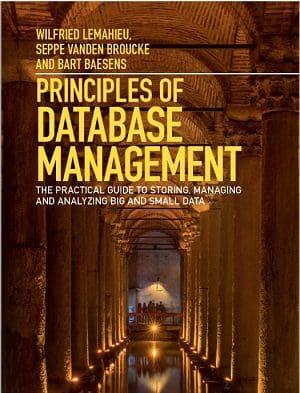In this tutorial, we will learn about the powerful time series tools in the pandas library.
Who is the greatest finisher in soccer?
It’s relatively easy to find the player who has scored the most goals in the last 12 years (hello, Lionel Messi). But which professional football (soccer) player is the best finisher, i.e. which player is most likely to put a shot they take into the goal?
Alibaba acquires Data Artisans?
Danny Bickson (noreply@blogger.com)
发表于
### Alibaba acquires Data Artisans?
Document worth reading: “Universality of Deep Convolutional Neural Networks”
Deep learning has been widely applied and brought breakthroughs in speech recognition, computer vision, and many other domains. The involved deep neural network architectures and computational issues have been well studied in machine learning. But there lacks a theoretical foundation for understanding the approximation or generalization ability of deep learning methods generated by the network architectures such as deep convolutional neural networks having convolutional structures. Here we show that a deep convolutional neural network (CNN) is universal, meaning that it can be used to approximate any continuous function to an arbitrary accuracy when the depth of the neural network is large enough. This answers an open question in learning theory. Our quantitative estimate, given tightly in terms of the number of free parameters to be computed, verifies the efficiency of deep CNNs in dealing with large dimensional data. Our study also demonstrates the role of convolutions in deep CNNs. Universality of Deep Convolutional Neural Networks
Who is the greatest finisher in soccer?
It’s relatively easy to find the player who has scored the most goals in the last 12 years (hello, Lionel Messi). But which professional football (soccer) player is the best finisher, i.e. which player is most likely to put a shot they take into the goal?
AI in Healthcare (With a case study)
Among multiple areas like customer analytics, finance, marketing, AI has shown a great promise in the healthcare domain. There has been increasing support towards using AI by both, the industry and the academia. In the following blog, we discuss 4 areas in which AI has helped the healthcare industry. As a bonus, for all the techies who like to get their hands dirty, we have included a practical tutorial for you to build your own malaria detection algorithm.
Top Skills Needed to Work as Data Scientist in iGaming
It’s a known fact that data science jobs are at the peak of popularity now. In 2007 the volume of digital data exceeded the volume of analog data by almost 15 times, amounting to 280 Exabytes of digital data to only 19 analog Exabytes. Currently, more than 90% of all information is digital. With the advent of huge data arrays, called Big Data, there’s a need for boost development of methods and models able to process large amount of information quick and efficiently. The so called “three V’sâ€� are traditionally used as the defining characteristics for big data:
MRP (multilevel regression and poststratification; Mister P): Clearing up misunderstandings about
Someone pointed me to this thread where I noticed some issues I’d like to clear up:
Principles of Database Management: The Practical Guide to Storing, Managing and Analyzing Big and Small Data
Sponsored Post.By Lemahieu W, vanden Broucke S., Baesens B. The book is basically offered as a service and comes with the following:
The book is basically offered as a service and comes with the following:
If you did not already know
BayesGrad  Recent advances in graph convolutional networks have significantly improved the performance of chemical predictions, raising a new research question: ‘how do we explain the predictions of graph convolutional networks ‘ A possible approach to answer this question is to visualize evidence substructures responsible for the predictions. For chemical property prediction tasks, the sample size of the training data is often small and/or a label imbalance problem occurs, where a few samples belong to a single class and the majority of samples belong to the other classes. This can lead to uncertainty related to the learned parameters of the machine learning model. To address this uncertainty, we propose BayesGrad, utilizing the Bayesian predictive distribution, to define the importance of each node in an input graph, which is computed efficiently using the dropout technique. We demonstrate that BayesGrad successfully visualizes the substructures responsible for the label prediction in the artificial experiment, even when the sample size is small. Furthermore, we use a real dataset to evaluate the effectiveness of the visualization. The basic idea of BayesGrad is not limited to graph-structured data and can be applied to other data types. …
Recent advances in graph convolutional networks have significantly improved the performance of chemical predictions, raising a new research question: ‘how do we explain the predictions of graph convolutional networks ‘ A possible approach to answer this question is to visualize evidence substructures responsible for the predictions. For chemical property prediction tasks, the sample size of the training data is often small and/or a label imbalance problem occurs, where a few samples belong to a single class and the majority of samples belong to the other classes. This can lead to uncertainty related to the learned parameters of the machine learning model. To address this uncertainty, we propose BayesGrad, utilizing the Bayesian predictive distribution, to define the importance of each node in an input graph, which is computed efficiently using the dropout technique. We demonstrate that BayesGrad successfully visualizes the substructures responsible for the label prediction in the artificial experiment, even when the sample size is small. Furthermore, we use a real dataset to evaluate the effectiveness of the visualization. The basic idea of BayesGrad is not limited to graph-structured data and can be applied to other data types. …